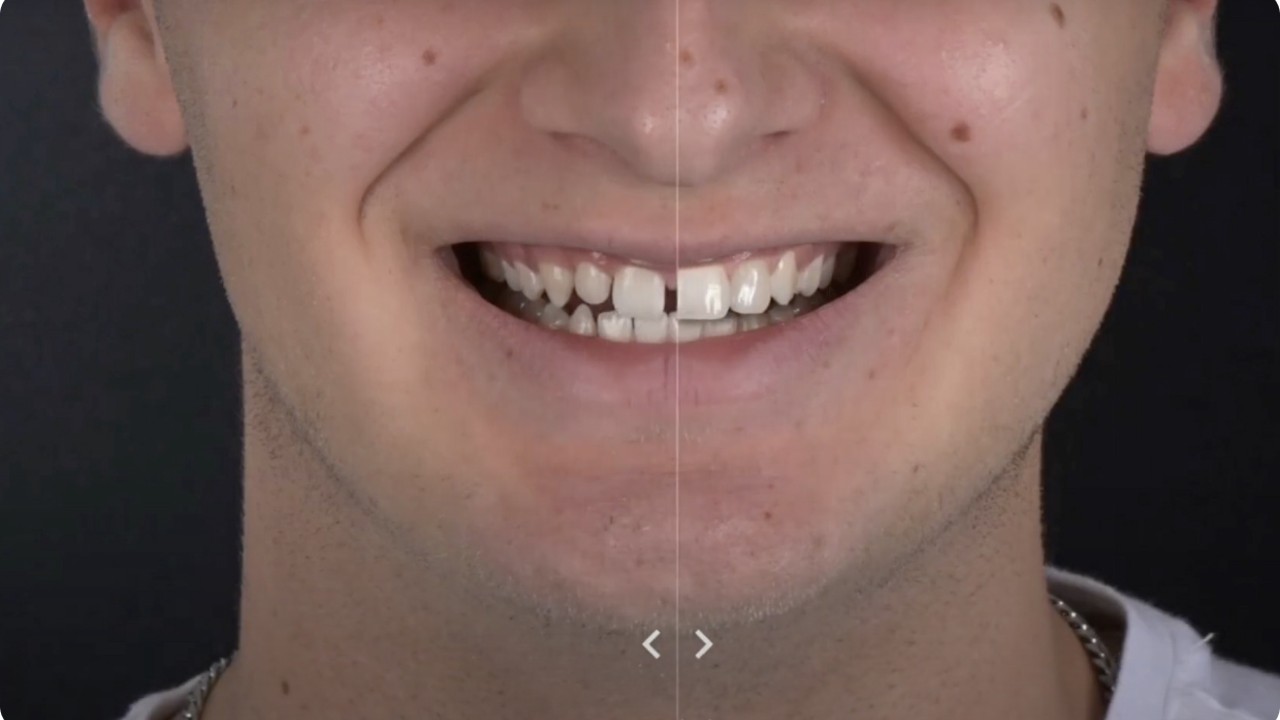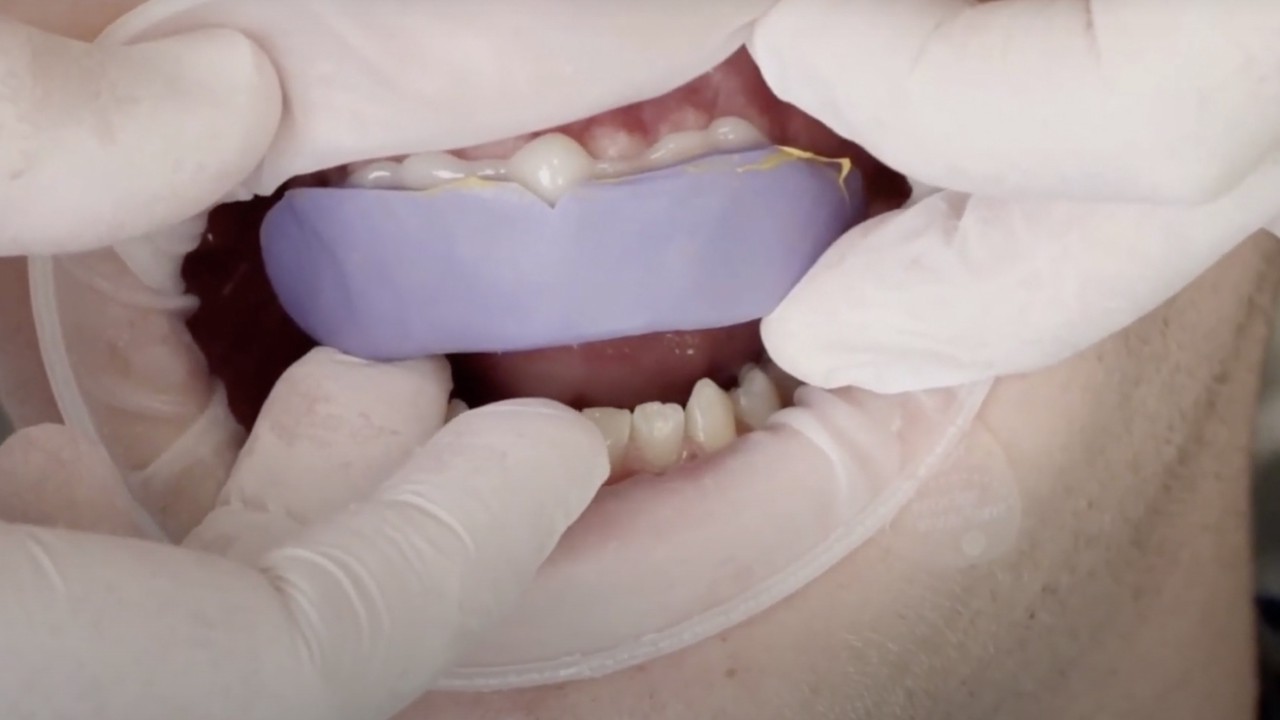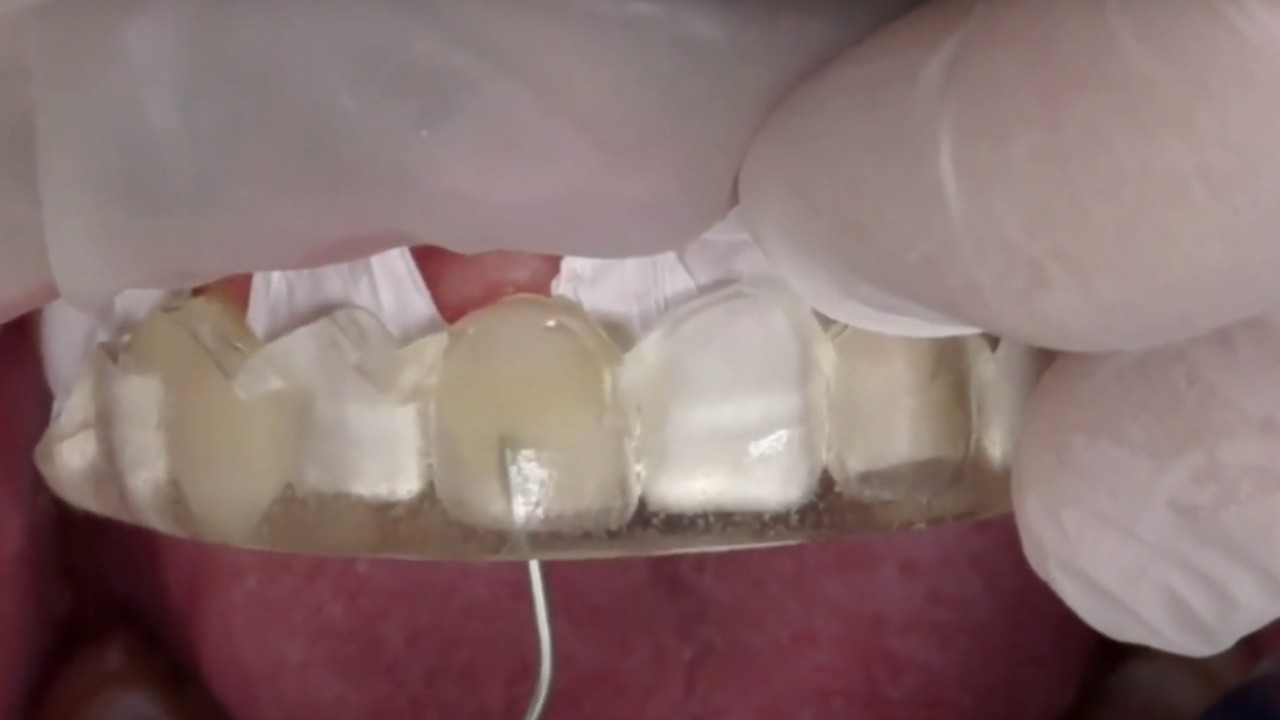Dr. Dario Novak answers all questions about ShapeMySmile method - examples from practice

What is ShapeMySmile?
It is a process of non-invasive smile embellishment designed by Dr. med. Dent. Novak Dario and Polyclinic Dentum. The protocol consists of 3 steps:
a. The first is a digital simulation that allows us to get an impression together with the patient on visual consultations of what can be achieved with composite veneers. In this visit, photographs of the patient are used in order to get the first visual insight into the final result even before the very beginning of production. Thus, patients get the impression of their future smile and what is possible, and what is not already before the very beginning of therapy.

b. Mock-up – Test wearing – before the final production, patients have the opportunity to try new teeth. By temporarily placing the design in the patient's mouth (up to several hours), he can get the final impression of his new smile and if necessary, at the last minute still decide on additional changes. A mock-up patient can take it off on their own that same day or if it makes them feel safer, we can do it in the office.

c. The grouting procedure is the part in which composite veneers are permanently glued to the teeth by the injection method.

When creating a new smile, digital 3D design procedures are used, the result of which is the printing of the model with the final appearance of the teeth. Through this model, a print is taken in transparent silicone and it serves as a mold into which the composite is injected, so the composite on your tooth takes the form of a mold (designed at the first term). In the photo you can see examples of the appearance of the initial situation, digital design, printed model and the final result.
How long is the injectible durable and what does it depend on?
My oldest cases are older than four years and I still don't see the day when they will last or I don't see a reason for their non-duration. Considering that the tooth below it is intact, I would say that the durability is safe for up to 10 years.
An example of a case after two years
This is a patient with bruxism that we rehabilitated with orthodontic therapy and finally with composite veneers. So, it is evident that it works even in high-risk patients (if we rehabilitate them). When discussing the durability of composite veneers, we need to think about a few things, which are; material, situation, function and habits and motivation of the patient.
- Material: GC has developed a nanohybrid material with a high percentage of fillers in injection form called GC universal injectable and this material has huge advantages over classical composites, these are long-lasting gloss, high strength and resistance to breakage.
- Situation: If the initial situation of the patient is unfavorable and there are risk factors that have not been resolved, such cases are not suitable for composite (I mean the patient's habits, bruxism, acid icrucifixions, acid reflex (erosions, etc.) and these problems must first be solved before installing the composite.
- The function is extremely important for the durability of the composite. Because of the lower strength than the teeth, we cannot expect them to be able to make up for lost dental tissue if we have not rehabilitated the patient, so the bruxist who ate his teeth will eat all the composites. There are ways in which this is also solved, but they require a multidisciplinary approach. The example of a patient with composites on all upper and lower teeth as a final solution after erosion and bruxism (therapy – changing habits, orthodontic therapy and composites): Follow up – more than 4 years for now – works!
How do you choose a color and how many colors do you use?
A special property of the material is the biomimetic ability – the ability to acquire the color of the teeth under the composite and the final color of the teeth is between the color of the composite used and the color of the teeth. This makes it easier to choose a color because I always use A1 and B1 and nothing else. Precisely because the composite chameleonically will take on the exact shade of the teeth.
An example of composite B1 in two different patients, in the end we get a completely different color, and it is here that this breadth of the possibility of adaptation is visible depending on the situation. In the first photo, a woman who has yellowish teeth eventually gets a slightly lighter tooth (especially incisally where there are no teeth underneath), but the tone is yellow, while in the second case the teeth are more in the spectrum of white or gray color and this final result gives the impression of brighter (or whiter teeth) although the same composite B1 was used.
Contraindications?
Contraindications are anything that are not indications. :)
Untreated bruxism, changed tooth color (composite can not change the color of teeth as can crown or veneer, means treated teeth are out), teeth that have lost most of the structure (huge fillings), poor hygiene and lack of motivation, a large change in the position of the teeth (indication for orthodontic therapy and maybe after that composites).
Indications are: Patients after orthodontic therapy (ideal cases), patients with diastemas and all other additive cases (i.e. all situations in which we would only get a good final result with the addition of material).
An example of changing a contraindication to an indication after orthodontic therapy
An example of a patient with poor hygiene, visible erosion and potential bruxism, bite and after orthodontic therapy we have a rehabilitated patient with better hygiene and functionally stable.
Wearing a splint after making?
I do not usually do splints to patients because the largest number of patients for injection technique comes mainly after orthodontic therapy, which means that after we make composites they still wear orthodontic retainers during the night, which in principle have a protective function. Relaxation splint is mandatory for bruxist patients, but maybe 20% of them carry this protection.
What if i accidentally break off a piece of veneer?
It's no big deal :). The composite as a material is extremely sturdy, but it is always possible for an accident to occur, in which case you should not despair because in the clinic we will continue to keep your models by which we made our teeth and in just a few minutes patch the damaged part of the veneer without any visible differences. The warranty for free repair is up to two years with regular inspections.
Example
What is the condition of the teeth under ShapeMySmile?
In this method, the tooth is maximally spared additional interventions precisely because this procedure is carried out non-invasively or additively, which would mean that the material is exclusively added to the tooth without taking away the existing dental tissue. The material is semi-transparent, so even if there are needs for some interventions (such as caries), we can easily spot it and intervene very easily.
Maintenance? Is there any particular concern about new veneers and teeth? Can I use thread between my teeth?
It is recommended that patients maintain composite veneers as well as their teeth, regularly brushing their teeth with a softer and less abrasive brush and paste, and regularly using thread between the teeth. Using this method of making teeth still remain separate, so it is possible to use thread. It is especially recommended that patients initially use a splint that can be additionally made at the end of the procedure and wear it during the night until they get used to the new size of their teeth. With this splint, new veneers protect against potential accidents until the muscles are learned to a new length and size of teeth. Also, we recommend caution when biting and biting off food so that the muscles get used to the new functional length of the teeth and thus avoid potential accidents and cracking of the material.
Procedure